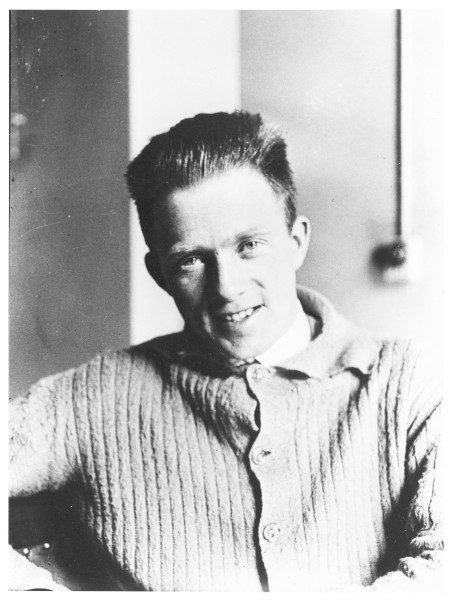world formula.
Quantentheorie: EPR-Paradoxon
Werner Heisenberg (1901–1976)

Werner Heisenberg is born in Würzburg, studies physics in Munich and receives his doctorate with Sommerfeld in 1923. In 1924 he goes to Bohr in Copenhagen. Working together with Born in Göttingen in 1925 he plays an integral role in the foundation of quantum mechanics. He develops matrix mechanics and, in 1927 formulates the uncertainty principle for their physical analysis and interpretation. He receives the Nobel Prize in 1932 for these two contributions. In 1927 Heisenberg is summoned to Leipzig. He works out a model of the atomic nucleus in 1932. Under National Socialism he starts working on the German nuclear energy program in 1939 and, in 1942 is named director of the Kaiser-Wilhelm Institute for Physics in Berlin. After World War II he establishes the Max Planck Institute for Physics in Göttingen, which is relocated to Munich toward the end of the 1950s. In 1958, he attempts a descriptive unity of the physical world with his
[ Sitemap ]
[ info ] This website was created by the MPI for the History of Science.
 Scene
Scene


 1st Slide
1st Slide
 Branching Point
Branching Point
 Module: Quantentheorie: EPR-Paradoxon
Module: Quantentheorie: EPR-Paradoxon Sequence: 0.0. Start_Quantentheorie_EPR
Sequence: 0.0. Start_Quantentheorie_EPR Branching Point: Paradoxes of Quantum Mechanics
Branching Point: Paradoxes of Quantum Mechanics Slide: The Layout of the Experiment
Slide: The Layout of the Experiment
